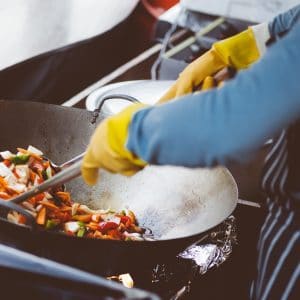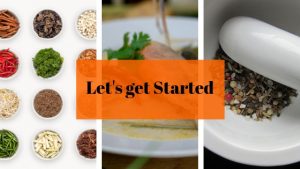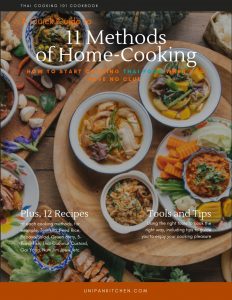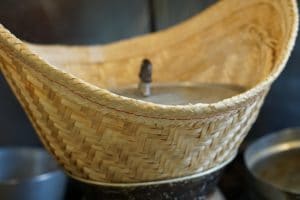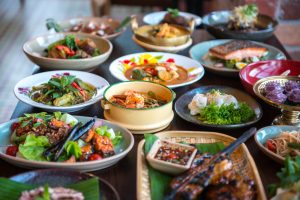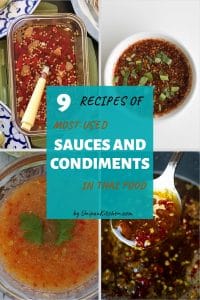Stop spending on expensive takeouts and save valuable time and cook with family at home.
Why Do You Want To Cook It Yourself?
If you get takeouts from a Thai restaurant and food becomes soggy, mushy, cold, dry, etc., you might blame to chefs, managers or restaurant owners because most Thai foods are often enjoyed fresh.
Sometimes, you even want to use a microwave, air-fryer, or any other methods to reheat but things get overwhelmed, vegetables get wilted.
What I try to say is not making you stop eating Thai food from restaurants, but I want to help you save money from buying an expensive meal which you can simply make it at home!
If you love eating Thai food and it has benefit to your health, I recommend to cook it yourself as chefs cook in the restaurants.
Also, you will find this is much healthier and cleaner when you prepare your own meal(can you trust yourself?)
Plus, I want you to save valuable time with family by doing a fun cooking activity because Thai food isn’t that hard to learn. Most of the time is preparation which your members will be ready to help indeed.
How to start cooking Thai food(and most Asian cuisines)
Are you an experienced home-chef?
If you are, you would have a knife skill in place and understand how to fry, boil, bake, grill, and easy preparation.
Then, you want to learn to do it diversity because you want to challenge yourself, prepare healthy living, and show off to your friends and family.
Get to know a little bit more about Thai culinary world, follow this link: How to start cooking Thai food in 3 steps
However, if you are super new to cook, or you’ve never cooked anything before, I recommend you should practice using different kinds of knives because I don’t want you to cut yourself since Thai food have a wide range of vegetables and herbs that you need to cut and prepare properly.
Next, learn how to cook with 11 methods of home cooking here: A Quick Guide To 11 Methods Of Home-Cooking[pdf]
In pdf, I gather 11 methods of traditional cooking I often use in my kitchen and I include recipes as examples.
- Tom(boiling)
- Tun(simmering, slow-cooking)
- Yum(salad mixing, cold cooking)
- Tum(salad smashing, pounding)
- Pad(stir-frying, woking)
- Tod(deep-frying, shallow-frying)
- Kaeng(currying)
- Nueng(steaming)
- Aob(baking)
- Yaang(grilling, broiling)
- Kruang Jim(making sauces and condiments)
The Essential Kitchen Tools
In the present, Thai food is prepared by typical tools we use in a regular kitchen such as stovetops(electric or gas), conventional oven, slow-cooker, non-stick pan, saucepan, pot, skillet, deep-fryer, etc.
However, there might be some equipment or tools you want to head up.
Pestle and mortar(affiliated)
I recommend having these in your kitchen in order to pound herbs and spices. You might want to use a food processor to blend or crush, but try these to authentically prepare the flavorful ingredients.
Rice cooker(affiliated)
It is an essential tool to cook perfect rice every time. It can also be used for stewing, slow-cooking, and making porridge.
Bamboo Steamer
It comes with a steamer to hold the boiling water underneath. Use about ⅓ of water in the steamer pot.
I use this to specifically cook sticky rice or sweet glutinous rice. It can be used to steam grains and beans as well. Soak them before and after use.
Wok or deep-frying pan(affiliated)
In Asian cooking, this is an important tool to perform stir-frying in high heat and hold lots of ingredients. It can be an ultimate tool to make soup, steamed food, and curries as well.
Stockpot(affiliated)
If you have big families, a huge tall pot is a must to carry. You can make soup broth to cook once and generously share your neighbors!
5 Thai etiquettes you should know
We invent food based on local produce, culture, and weather.
Thailand connects both high mountain and sea level so this such a land can grow plenty of herbs, spices, vegetables, and fruits so well.
If you had an opportunity to visit there once, you would come back again JUST TO EAT.
Cooking Thai food is actually one of the family activities which means you can have fun with it. When I start cooking, I call my friends, mom in law, neighbors to give me a hand and help me taste it.
Thai people are easy-going, so you don’t have to worry much about the dining manner or inappropriate etiquette.
But if you’re afraid of someone will look at you as if you’re an alien from Mars, I have 3 Thai etiquettes you might want to consider.
We share food at dinner and we always pick the various type of dishes and different spicy levels.
Like many cultures, a family gets together to eat and share food, Thai people spend their time before bed cooking and eating together.
The chef should know how spicy each member can handle, so you can adjust the recipe according to what they prefer.
When I was in Thailand, my mom was the chef in our family and I was her assistant. We had 4-5 children (including me!), 4 adults and 2 elders, so she had to make 3 different spicy levels: not spicy, mild, and extremely spicy.
Also, she cooked a variety of dishes:
- stir-fried morning glory
- pineapple curry with mussels
- Tom Yum soup with chicken wings
- shrimp paste chili sauce, and some fresh vegetables.
For the same reason, choose your dishes wisely when making a shared meal because Thai food is vibrant and complex in flavor. And, I even mix with other cuisines in my dinner sometimes.
2. Thai traditional etiquette is to eat rice as a main dish, food as side dishes so we use a spoon to scoop and a fork to guide into one bite
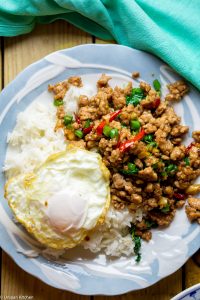
Thailand is the land of rice. Half of every bite is usually steamed rice. That’s why most Thai food is spicy. And we reduce the spiciness by adding more rice.
For example of Thai curry, we ladle the curry on the top of rice, mix it up, and scoop up to eat. So, you can control how much spicy sauce should blend in with rice, only add more rice when it comes too hot.
Therefore, if you’re tasting your food and it’s still bland, don’t be afraid to add more of everything to make it outstanding because you will need to eat with lots of rice anyway.
3. We always have spicy trays, condiments and sauces ready all the time.
For example, Prik Num Pla, seafood dipping sauce, chili flakes, chili oil paste, vinegar, and pepper, etc
When you visit any Thai restaurants near you, they surely have spicy trays for you to add spicier to your plate.
However, restaurants in Thailand set not only spices, but they have a whole seasoning tray for you such as sugar, fish sauce, vinegar, lime wedges, etc.
You might ask why they don’t season well in the first place!
In my opinion, Thai people might want to craft our own flavor every time to fit their personal preference.
And, that’s how Thai people eat it!
Grab, 9 recipes of most-used sauces and condiments in Thai food and start to cook Thai food in your kitchen today!
Let’s get cookin’
Hi! My name is Guide and here’s my fiancé, Amy(Siriwan). About us>>
“We want to encourage you, a busy home chef, to cook it yourself Thai food and to have an alternative eating lifestyle.”

